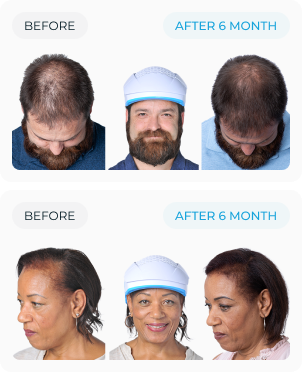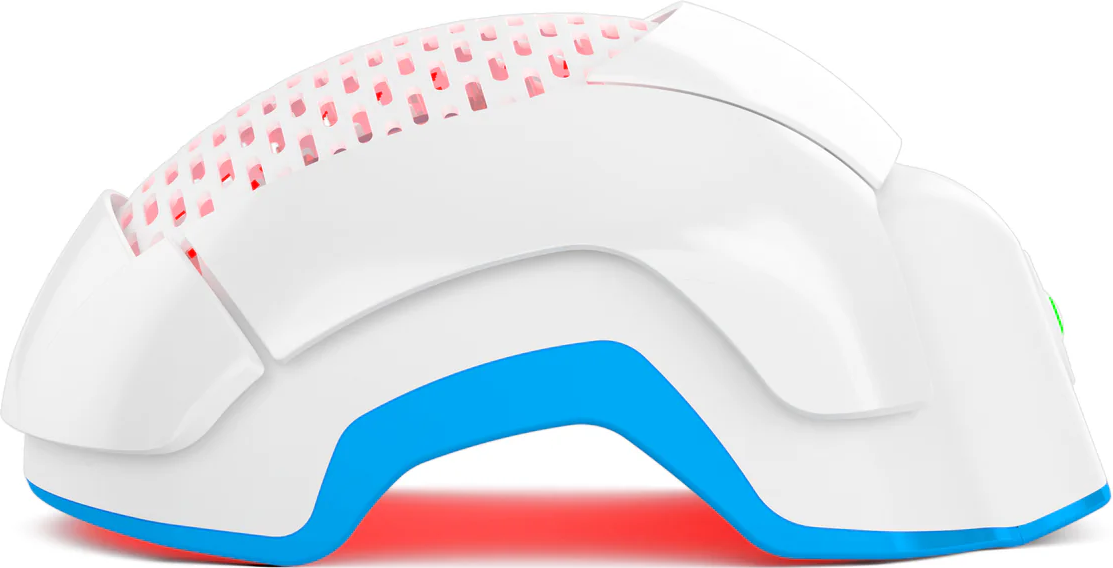Hairlines don’t just “go through a phase.” They shift, recede, thin, zigzag, or flat-out vanish — sometimes fast, sometimes sneakily. A messed up hairline can mean uneven growth, recession at the temples, visible thinning up front, or patchy edges that refuse to grow in sync with the rest of your scalp. For some, it’s a genetic hand-me-down. For others, it’s the price of tight hairstyles, hormonal chaos, or damage that builds up over time — one flat iron, one stress spike, one rough ponytail at a time.
But here’s the thing: you’re not stuck with it. Fixing a messed up hairline isn’t a “maybe” — it’s a process. And yes, it can work. The key is knowing what caused it and using methods that are backed by real science — not influencer guesswork or kitchen-sink hacks. Whether you’re dealing with breakage, a receding hairline, or an edge game that’s suddenly gone off the rails, these 7 proven strategies can help you turn things around.
Causes of a Messed-Up Hairline
Hairlines don’t just get “messy” on their own. If yours is receding, patchy, thinning, or making angles it was never supposed to — it’s usually a result of repeated abuse, underlying conditions, or both. And no, it's not always genetics. But when you treat your scalp like it’s indestructible, it tends to respond by giving up.
1. Genetic Factors
Let’s be honest—if a receding hairline is common in your family by 30, chances are you’re next. Hereditary pattern hair loss is one of the biggest culprits in hairline recession, especially among men. This type of loss is gradual, progressive, and often starts at the temples.
2. Traction Alopecia
That “snatched” look might look clean, but your follicles think otherwise. Tight hairstyles like braids, ponytails, weaves, or cornrows cause chronic tension that weakens hair at the root. Left unchecked, that constant pulling leads to traction alopecia — one of the most avoidable reasons behind a messed up hairline.
3. Hormonal Imbalances
When your hormones glitch, your hairline often catches the fallout. Conditions like PCOS or thyroid disorders throw your androgen levels off balance — and that imbalance can shrink follicles, accelerate shedding, or halt growth altogether. If your hairline’s acting weird and your hormones are off, that’s not a coincidence.
4. Medical Conditions
Scalp infections, autoimmune disorders like alopecia areata, and other inflammatory issues can cause localized hairline loss. In these cases, follicles aren’t just shedding — they’re under direct biological attack. If your hairline’s patchy, inflamed, or scabby, you’re dealing with more than bad styling habits.
5. Stress & Lifestyle Triggers
Chronic stress messes with everything — sleep, hormones, and yes, your hairline. Conditions like telogen effluvium push more hair into the shedding phase than your scalp can recover from. If you’ve been burnt out and your temples are thinning, your cortisol levels probably deserve a second look.
Does Shaving Mess Up Your Hairline?
No. Shaving doesn’t mess up your hairline. It doesn’t train it, ruin it, or change the texture. That myth needs to retire already. What does cause damage is poor shaving technique, friction, or dragging razors against inflamed skin — but that’s not the same thing as follicular loss.
How to Fix a Messed-Up Hairline?
Here’s what actually works. Seven methods that are medically valid, consistently useful, and fully fix-friendly — if you’re not trying to shortcut the process.
1. Identify the Cause of Your Hairline Issues
Guessing isn’t a strategy. If your hairline is thinning or uneven, start with the source. Is it hereditary? Tension-based? Health-related?
Getting a proper diagnosis from a dermatologist or trichologist helps you avoid wasting time (and money) on the wrong treatments. The fix only works if it matches the problem.
2. Change Your Hairstyling Habits
Stop pulling. Hard styles like tight fades, braids, ponytails, or anything that drags on your edges will break follicles down over time. Switch to low-tension styles. Skip the daily manipulation. And yes, even “protective” styles can turn on you if they’re too tight or done too often. Fixing a messed up hairline starts with not making it worse.
3. Improve Your Hair Care Routine
Ditch anything that burns, causes flakes, or leaves your scalp raw. Use mild shampoos that respect your skin barrier. Avoid overwashing, hot tools on full blast, and chemical treatments that sound like lab experiments. A solid routine protects the scalp, prevents breakage, and keeps existing follicles in play — all critical if you’re trying to rebuild your line.
4. Focus on Nutrition and Lifestyle
Your follicles eat what you eat. Iron, zinc, vitamin D, and protein are non-negotiables for strong hair regrowth. If you’re low on any of these, your hairline won’t hold. Hydration matters too. And if your sleep or stress levels are garbage, your hair will act accordingly. Eat smarter. Sleep longer. Chill out. Your scalp will notice.
5. Try Natural Remedies for Hairline Regrowth
Some oils work harder than others. Castor oil, rosemary oil, and coconut oil have all been studied for their ability to support hair growth and reduce inflammation. They don’t reverse severe recession, but they can reinforce a weakened hairline — especially when paired with scalp massage to improve circulation. Just keep it consistent. A one-time oil rub isn’t a remedy.
6. Use Hair Growth Treatments
Two clinically validated treatments stand out: minoxidil for hairline regrowth and laser helmet for hair loss. Minoxidil widens blood vessels and prolongs the growth phase, while laser phototherapy stimulates follicle energy at the cellular level. Both can improve thickness and density in early-to-moderate cases — especially if started before full follicular dropout.
7. Consider Professional Treatments
If your hairline’s been MIA for years, it may be time to bring in the pros. Platelet-rich plasma therapy (PRP) uses your own growth factors to trigger regrowth at the root level. Hair transplant surgery remains the gold standard for restoring a natural line — especially when you’re past the point of topicals. And for non-surgical illusion, scalp micro pigmentation can create the appearance of a sharper, fuller edge.
Conclusion
A messed up hairline isn’t a dead-end — but it is a red flag. Fixing it starts with figuring out what wrecked it, stopping the damage, and building a plan rooted in fact, not fantasy. Whether it’s changing your routine, finding the right treatments, or getting real with a specialist, consistency is what gets results. Bad edges don’t fix themselves — but they can be fixed. You just have to stop playing defense and start playing smart.
























